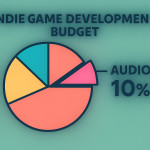Day rates for musicians in 2025: negotiate fair pay for studio, tour and stream
In 2025, knowing the right day rate for studio sessions, tour dates and streaming projects protects your income and signals professionalism to clients. This guide breaks down current benchmarks, explains the hidden variables that move the needle and equips you with proven negotiation tactics so you leave every gig fairly paid.
Why day rates still rule in the on-demand music economy
Streaming subscription models, AI-assisted composition and remote sessions have diversified revenue streams, yet most producers and music directors still budget by the day. A clear day rate:
- Sets transparent expectations for rehearsals, recording or show days.
- Simplifies invoicing across multiple revenue lines (royalties, merch, sync).
- Protects you when projects run long or change scope.
Platforms such as Artfolio's musician collaboration board increasingly filter talent by day rate brackets. Publish yours confidently to surface in those searches.
2025 benchmark day rates: studio, tour and stream
The figures below merge 2024 AFM wage scales, Musicians' Union UK guidance and leading live-nation tour budgets, adjusted for projected 4 % inflation.
Source : Musicians' Union UK Rate Card 2024
| Context | Low (USD) | Average | High | Typical Extras |
|---|---|---|---|---|
| Studio session (per day) | $300 | $400 | $700+ | cartage, doubling fees |
| Tour rehearsal | $250 | $350 | $600 | per diem, transport |
| Tour show day | $350 | $500 | $900+ | backline share, merch cut |
| Livestream session | $300 | $450 | $800 | broadcast reuse rights |
| Sync / soundtrack recording | $450 | $600 | $1 000+ | buyout or royalty share |
Use the averages wisely
Rates reflect professional players with 3–5 years' track record. Emerging musicians can quote 15 % below average; niche specialists or union contractors often sit 20 % above.
Six variables that move your number up or down
- Experience & credits : Award nominations, major-label releases or verified credits featured in online directories (verified-credit badges) justify premium brackets.
- Instrument demand : Pedal-steel players or multi-instrumentalists command 10-25 % more than a saturated guitar market.
- Rights scope : A global buyout for sync pays higher than a session that retains neighbouring rights.
- Location : New-York and London studios pay 12-18 % more than regional hubs; factor travel when quoting.
- Schedule pressure : “Tonight-only” calls warrant an extra 25 % rush fee.
- Value add : If you also arrange parts or bring specialty gear, treat those as line-items, not freebies.
Negotiation playbook by project type
1. Studio sessions
Lead with your cartage and doubling policy. Bundling gear transport early avoids end-of-day friction. When the producer hints at “possible extra takes,” pin a clear overtime rate (e.g., 125 % of base) after eight hours.
2. Tour rehearsals & show days
Always separate rehearsal and show rates. Rehearsals rarely include concessions like hospitality or merch percentages. Link your calendar in real time via flexible rehearsal scheduling tools so management sees the cost of last-minute changes.
3. Livestream or remote recordings
Latency fixes and redundant backups mean extra tech time. Quote a half-day prep rate plus the live performance fee. Clarify broadcast reuse limits—and renegotiate if the show is later re-edited for VOD.
4. Sync & soundtrack gigs
Producers often offer an all-in buyout. Counter with two options: a higher one-off fee or a more modest day rate plus 2 %-4 % royalty. Reference session contract clauses to stay protected.
Contract wording that locks in the deal
A concise rider beats a verbal promise. Include:
- Scope: dates, call times, services (performance, arranging, sound-check).
- Compensation: day rate, per diem, overtime, travel reimbursement.
- Rights: sync territory, broadcast windows, royalty splits.
- Cancellation: 50 % fee if cancelled inside 48 hours.
- Payment terms: 50 % deposit, balance on delivery or show day.
Attach schedule A for gear list; schedule B for deliverables. Need a conversation starter? Borrow templates from producer-meetup networking scripts.
Tools and calculators worth bookmarking
- Union rate calculators (AFM, MU) auto-add doubling and cartage.
- Currency adjusters for cross-border tours—embed them in your invoices.
- Smart contract apps that integrate with Stripe to trigger payment upon file delivery.
- Tour budgeting spreadsheets (international festival logistics guide) to balance per diems and lodging costs.
Common pitfalls & how to avoid them
- Accepting “exposure” livestreams. Even charity events should cover expenses and usage rights.
- Under-estimating prep time. Complex arrangements justified rehearsal pay; factor it in.
- Ignoring remote tech costs. Cloud collaboration fees and plug-in licenses are billable.
- Verbal renegotiations on tour. Always issue a quick addendum email before the next city.
Quick self-test: are you negotiation-ready?
FAQ
- Should emerging musicians quote below the 2025 averages?
- Yes, but cap the discount at 15 %. Undercutting further devalues the market and is hard to recover from.
- Can I charge different rates for in-person and remote studio work?
- Absolutely. Remote sessions save the client on travel and backline, yet add your tech-prep time. Two separate line-items keep it transparent.
- How do I handle royalty share on top of a day rate?
- Add a clause stating royalty percentage, collection method (PRO, label accounting) and audit rights. Never rely on verbal promises.
- What if the client wants a full buyout?
- Offer a higher flat fee reflecting lost future earnings, or negotiate a buyout limited to specific territories or time frames.
- Is a per diem mandatory on domestic tours?
- Not legally, but it's industry standard. If management refuses, raise your day rate to compensate.
Next step: lock your rate and land better gigs

Now that you know the 2025 benchmarks and the levers that justify higher fees, update your rate card, attach it to every pitch and test it on your next booking call. Want deeper contract templates? Download the free toolkit linked inside our showreel-to-session guide. Fair pay starts with you—quote it, write it, and get back to making music.
Ready to secure your next session? Publish your refreshed day rate on Artfolio today and watch qualified briefs roll in.











